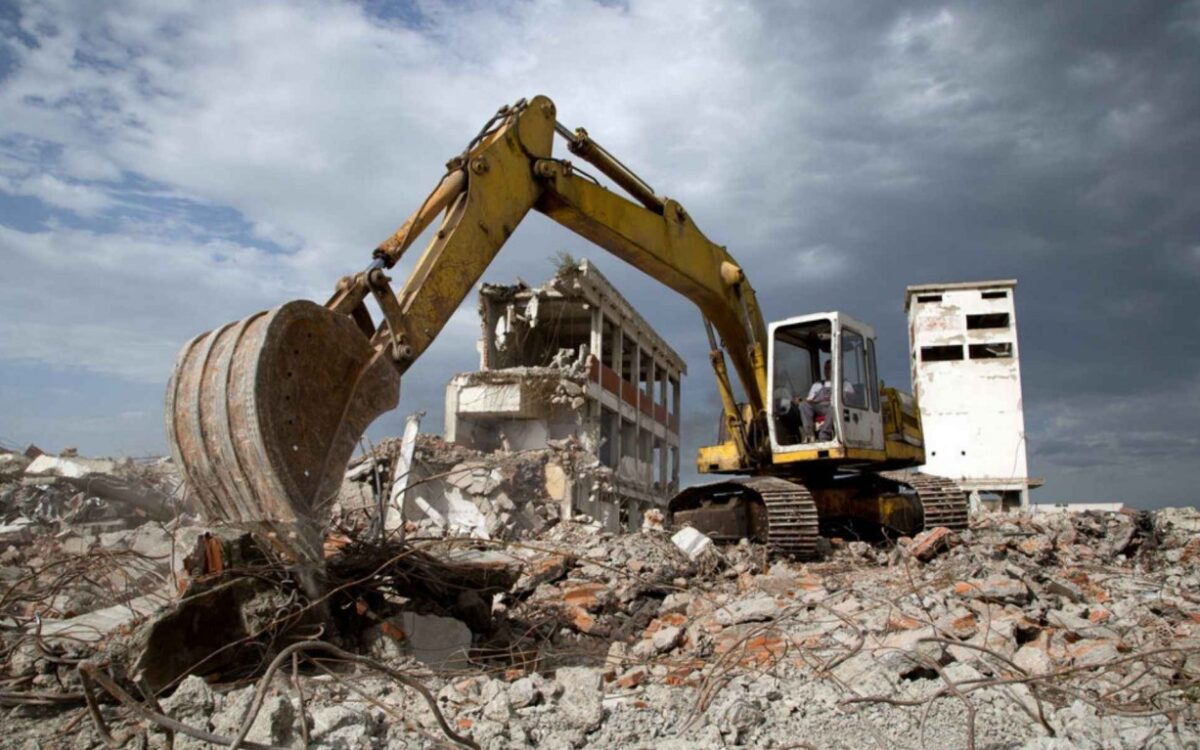Sustainable management of construction and demolition waste
Sustainable management of construction and demolition waste (CDW) is a critical issue that needs to be considered during the design and construction of industrial buildings as increasing regulation is driving the need to manage CDW in a sustainable way.
The building and construction sector is one of the largest generators of waste in the world. It is estimated that construction and demolition activities account for approximately 30 per cent of the solid waste generated each year, according to the UN. In developed countries, this figure is even higher, with construction and demolition waste accounting for up to 50 per cent of the total waste generated. Much of this waste is generated during the construction phase of a project and construction workers begin to assemble the building.
In the US, it is estimated that more than 130 million tons of demolition waste is generated each year a large proportion of which is composed of concrete, bricks, asphalt, glass, metals, plastics and wood, a waste stream that can be difficult to recycle and have a significant environmental impact if not managed properly, according to the latest Business Research Company (BRC) report. CDW, like all major waste streams, is increasing. The construction and demolition waste management market is forecast to grow to $226.16 billion in 2026 at a compound annual growth rate of six per cent, according to the latest BRC report. While the amount of CDW increases so too does the need to manage and reduce its environmental impact.
“In times of increasing sustainability through circular economy and urban mining, it is important that construction waste is not simply dumped and disposed of, but understood as a resource,” Dennis Kottmann, head of marketing at Surplex, says. “Recycled mineral material can be reused as a building material and waste can be burned to generate heat and electricity.”
Management of construction and demolition waste
There are a number of ways to manage CDW in a more sustainable manner including the recycling and reuse of construction and demolition materials. Waste is a resource that can replace the use of virgin materials in new construction projects. The reuse of waste materials can help to reduce the amount of energy and resources needed for the production of new materials and can also help reduce the overall cost of a project as recycled materials are usually cheaper than brand new ones.
“Typically 95 per cent of materials across all sites can be reused or recycled, and demolition companies have technology on their side to ensure that these materials can be sorted accordingly,” Ben Griffiths, SHE and operations director at Rye Demolition, says. “For example, plasterboard is routinely processed to create new plaster, and bricks can be cleaned and reused too. Additionally, industrial magnets are used to separate metals on site which are then recycled.”
Recycling CDW is an effective way to reduce landfill waste, conserve energy and natural resources and create jobs in the recycling industry. According to the UN Recycling can reduce 46 per cent of total environmental damage and applying industrial building system (IBS) to reduce waste generation on-site can reduce impacts by 98 per cent compared to landfill.
“As far as possible, a building is dismantled piece by piece so that the materials can be taken out separately,” Kottmann explains. “Wood, concrete, metal and plastic parts are the outcome. Wood and plastic are difficult to recycle but mineral materials, such as concrete, plaster, mortar, screed and bricks, can be recycled to a large extent.”
Waste crushers and compactors reduce the size of waste materials making them easier to manage and recycle, while waste segregation systems separate different types of waste materials making them easier to recycle. AMP Robotics’ AI-guided system, for example, improves pick rates and bale purity in construction and demolition debris by incorporating deep learning and computer vision to identify, separate and recover recyclables in the waste stream.
“Recycled concrete aggregate (RCA) is often used as a base for roads and pavements, as well as a drainage material for the underground embedding of pipes and lines,” Kottmann adds. “Additionally, the material is also raised on embankments and railway lines. Around three quarters of the RCA ends up there.”
Generating energy from CDW
Waste materials can be incinerated to produce energy that can then be used to power construction equipment or to heat buildings. Gasification involves converting construction waste material into a gas that can be used as a fuel. Plasma gasification uses high-temperature plasma to convert waste material into a gas that can also be used as a fuel. A company called InSinkErator has developed a process that turns demolition waste into fuel. The process sorts demolition waste into metal, paper, plastic and organic. The metal is melted down and formed into small pellets while the paper, plastic and organic waste is turned into fuel that is burned in a furnace with the heat used to generate electricity. Each approach has its own advantages and disadvantages but all have potential to make a significant contribution to waste reduction.
Regulation driving sustainable CDW
In the US, the Environmental Protection Agency has developed voluntary guidelines for the sustainable management of CDW that encourage the use of recycled and recyclable materials, the reuse of construction and demolition waste, and the proper disposal of waste. CDW represents 33 per cent of the waste generated in the EU and authorities now consider CDW a priority stream of action. During the last decade construction in Europe generated around 827 million tonnes of CDW on average per year and only 50 per cent of waste is recovered, according to a report by Applied Science. The EU Construction Products Directive now requires that construction products must not cause unacceptable environmental impacts during their life cycle.
In UK the Department for Environment, Food and Rural Affairs has set aside £1.2 million of funding to help local authorities implement new systems to monitor and control the amount of CDW. The money will enable authorities to develop systems to monitor and control the amount of CDW produced from new building projects and ensure that it is disposed of in the most sustainable way possible. In another initiative, the UK National Federation of Demolition Contractors has ordered its members to switch to a more environmentally friendly Hydrotreated Vegetable Oil fuel that offers a carbon emission reduction of up to 90 per cent compared to conventional fuels.
Sustainability ‘outpaced’ by construction growth
“There is no hiding from the fact that traditional demolition methods aren’t the most efficient,” Griffiths, says. “As a result there has been much criticism of the process and calls for demolition to be banished altogether. While major progress has been made to ensure that emissions and waste are curbed, there is no denying that the sector needs to make further changes. However, demolition should not be stopped completely. Instead, steps should be taken to ensure that it is only carried out where necessary and in the most environmentally friendly way possible.”
Professor Michael Stacey, teaching fellow at the Bartlett School of Architecture suggests that demolition can sometimes be the more efficient option, saying: “In some situations it may use less carbon to demolish a building and replace it with an entirely new structure that has had sustainability considered from the outset.”
Eradicating demolition altogether is clearly impractical but in sustainable management of its CDW the industry must put in a collective effort to achieve the drastic reductions in waste and emissions needed to create a greener, healthier planet. The good news is that with increasing regulation, innovations in CDW processes and low carbon technologies, change across the sector is happening rapidly.





